Breaking Ground 112 - Skydiving: My Unforgettable Adventure
By Sarah Cripps, Upper Cumberland development district, TN Council on Developmental DisabilitiesIn 1972, I was born with a bilateral cleft lip and palate and with bilateral anophthalmia (that is to say, without any globes in my eyes and without any vision). From an early age, I developed the philosophy that life is to be experienced fully with all of my intact senses.
In 1982, I saw a movie that changed my life. It was a biopic about the blind actor and musician, Tom Sullivan, entitled “If You Could See What I Hear.” By watching this movie, I learned that Tom Sullivan had skydived despite his total blindness.
I made a vow to myself that someday, I, too, would skydive.
On Saturday, November 28, 2020, I finally realized my long-held dream of skydiving when I took a tandem jump at the Tullahoma airfield. I purposely did not inform my parents or sisters in advance of my tandem jump because I feared that some of them would attempt to discourage me. They would learn about it once it was over, one way or the other, I decided. That morning, I telephoned my husband and informed him that I would be skydiving. Obviously, Mack, being the cautious and prudent sort, was apprehensive and a bit nervous, but he wished me luck in my endeavor.
My research informed my decision to skydive only in Tullahoma. I knew that many of the instructors there had served as soldiers and jumpers in the United States Army's vaunted 101st Airborne Division at Fort Campbell.
The previous day, I had telephoned a close friend and cryptically asked her if she would be able to drive me to "an appointment in Tullahoma" on Saturday. She agreed to drive me and, fortunately, didn't ask me to elaborate.
Once my friend picked me up on Saturday morning and we were well underway, I disclosed my planned skydive.
Upon arrival at the airfield, I went inside and paid for my tandem jump. I also paid for a videographer to capture my tandem jump for posterity.
I decided not to inform the registration clerk of my blindness because I did not want this to be a roadblock for me. I had come too far at this point and would not be denied.
I then met my instructor, and he satisfied all of my prerequisites: He was a former soldier with the 101st Airborne Division, and he had numerous successful jumps under his belt. When I revealed to my instructor that I was totally blind, he replied, "Okay, no worries. You'll be fine."
One of my primary concerns that day was to ensure that I did not lose my prosthetic eyes during the free fall. Therefore, after arriving at the airfield, I purchased some high-quality, sturdy goggles to ensure that my prostheses remained in place. After this, I was as prepared as I possibly could be.
I felt a pit in the bottom of my stomach as I boarded the aircraft. We began our ascent to our jumping altitude of 14,000 feet, nearly three miles up into the atmosphere. My instructor explained that due to the high speed of our descent during the free fall, and because of the rushing wind in our ears, we would not be able to communicate verbally until the parachute had been deployed and we were under canopy. He came up with a system of communication for the two of us that involved him tapping me different numbers of times on my left and right shoulders. This is how he would direct me as to what actions I needed to take. My instructor also explained what I would need to do when exiting the aircraft.
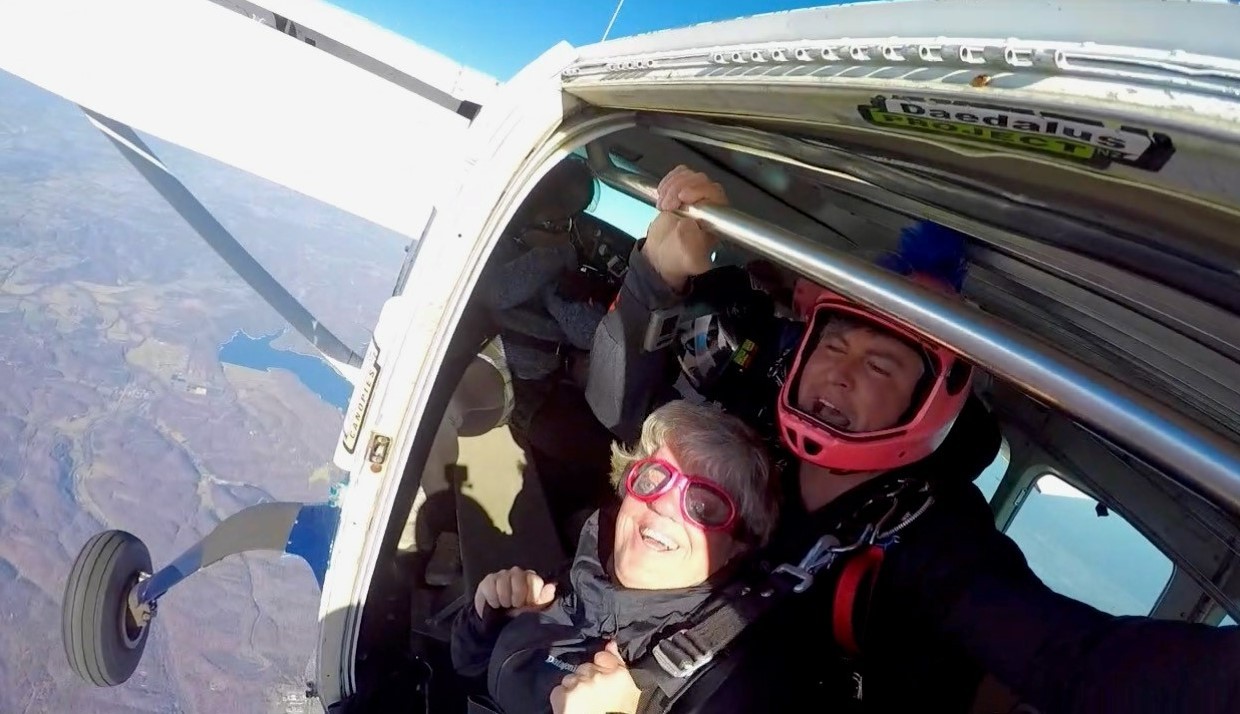
Once we had ascended to 14,000 feet, I heard the call, "jumpers away!" It was time to leave the plane! My instructor and I sat on the floor of the plane in the threshold of the open door, with our legs dangling outside the plane into nothingness. Based upon my training and instruction, I knew that we would have to rock back and forth three times and then physically throw our bodies out of the airplane. This was the most harrowing part of the jump for me; I was terrified!
As I sat there waiting to jump, I wondered if I had the courage actually to throw my body out of the plane. I psyched myself up by reminding myself that I had wanted to skydive for thirty-eight years. This was no time for cold feet.
As I sat with my legs dangling outside the aircraft, I could feel the force of the wind on my legs and feet and also noted the cold. Then, we jumped!
Immediately upon exiting the airplane, my instructor and I began spinning violently while somersaulting backwards and forwards. The wind roared deafeningly in my ears, and this was the only sound of which I was conscious.
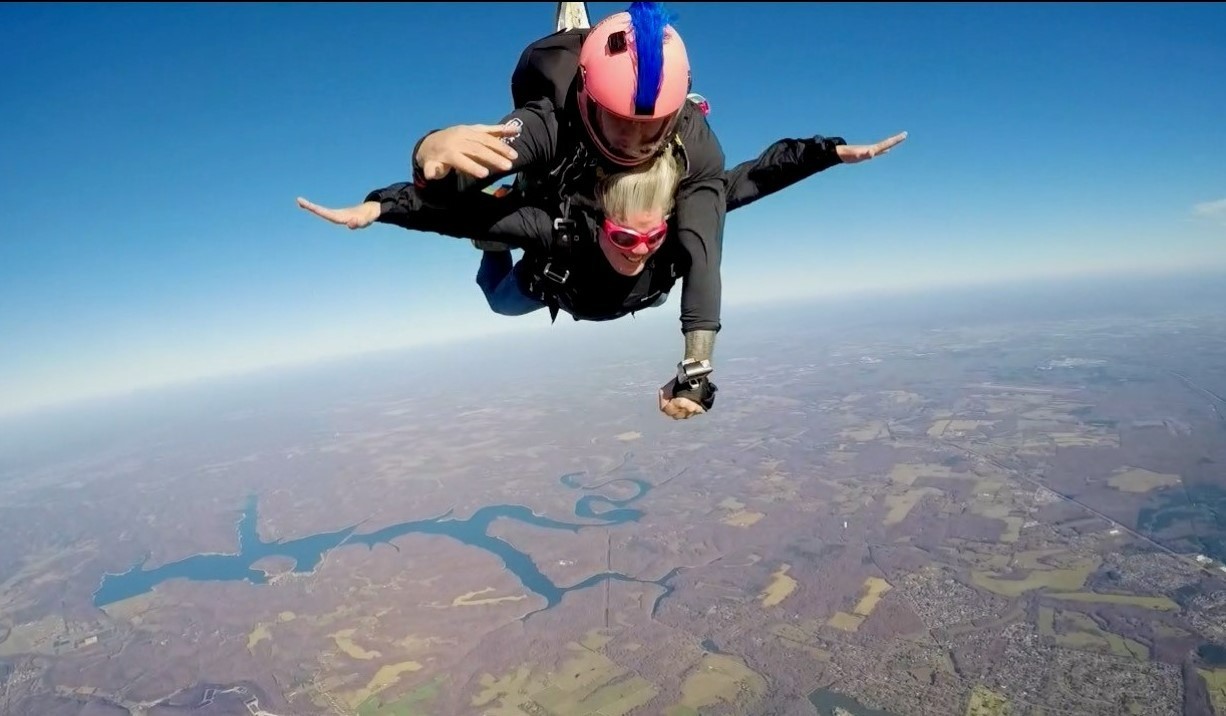
Once we were a good distance away from the airplane's propeller, my instructor began directing me through his series of taps. We soon were free falling at a speed of over 120 miles per hour, spread out in the prone position. During the free fall, I had only a few recurring thoughts:
"This is it!"
“I hope the parachute opens!"
"God, my ears are hurting!"
Although I had planned ahead and purchased goggles, I did not think to wear ear plugs to protect my ears from the speedy descent and loss of altitude and from the roaring wind. This was a mistake. My ears bothered me for the next few days. At the same time, I could not stop smiling because of the exhilaration I felt during the free fall.
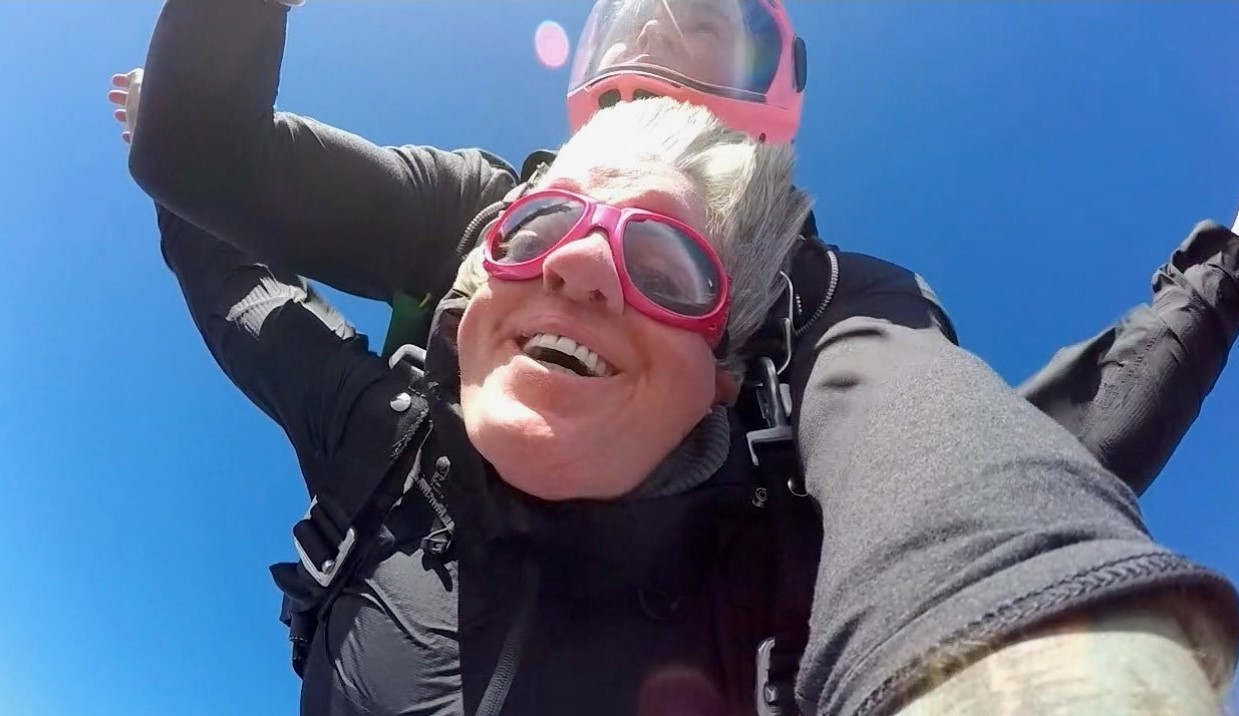
After a minute and a half, my instructor deployed the parachute. Immediately, the soundscape of the world around me changed dramatically. We floated quietly above the earth, descended slowly, and spoke freely. Far below me, I could hear the sounds of traffic and of birdsong.
Once we were under canopy, my instructor asked me, "Do you want to do some turns?" Of course, I immediately said, "Yes!" Then, I began manipulating the parachute as he directed, and we turned and spun in the air! How wonderfully thrilling it was to control the parachute and perform these loops and turns! This was right down my alley.
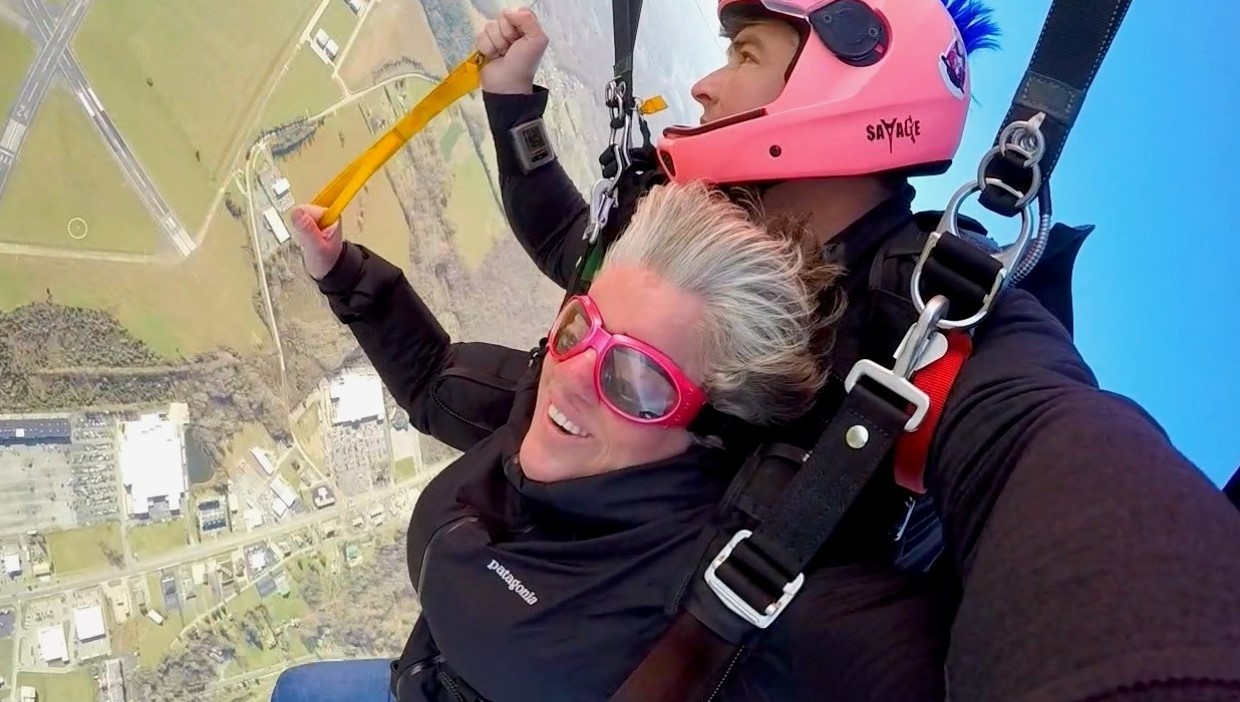
Then, we landed softly on our backsides and immediately scrambled to our feet. I had done it! Relief, utter contentment, and pride at my accomplishment washed over me. I returned home with an electrifying experience and an exciting story to share.
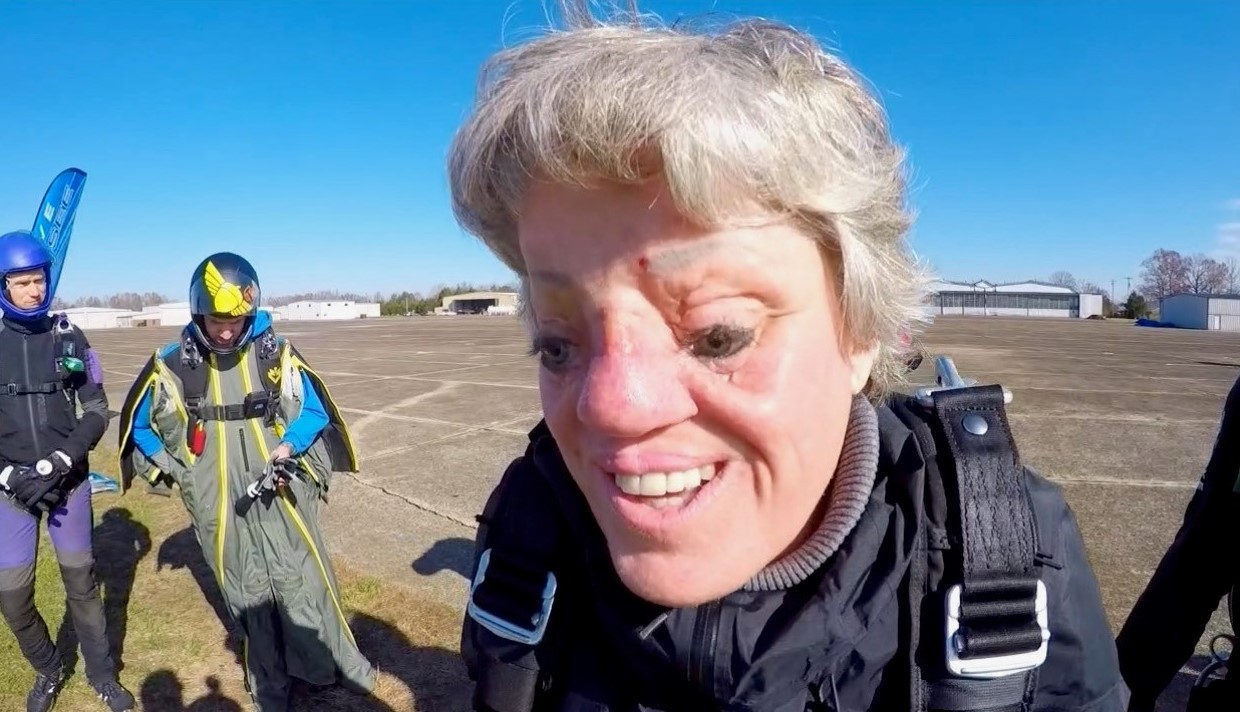
Sarah Cripps is practices family law in Smithville, with degrees from Vanderbilt University and Tennessee Tech. Sarah has been blind since birth, and is a recognized community leader personally and professionally. She has represented the Upper Cumberland development district on the Tennessee Council on Developmental Disabilities since her appointment by Gov. Bill Lee in 2019. She also serves as the chair of the Council’s Policy Committee.